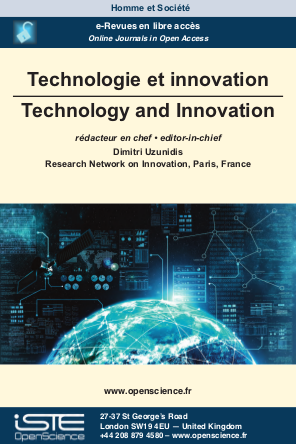

Social Sciences and Humanities > Home > Technology and Innovation > Issue
The paradigm of most of today’s industrial business models seems to be the utter denial of the possibility of
accidents occurring in industry and of their catastrophic consequences. The very short-term business vision of these
models, concerned only with an economy which relies on stock prices, does not correlate with the reality of industrial
plants which degrade before our very eyes according to the laws of physics. There is a distinct theoretical incompatibility
between our current drive for short-term profit and the need for long-term solutions to avoid these kinds of accidents and
disasters. How long will we continue to make excuses for the economic and social consequences that our technological choices and their resulting products have on us? We would save our planet if only we were able to replace this dogma of denial with a greater consideration for the mitigation of industrial accidents.
The success of the “Cité des sciences et de l’Industrie” museum in accommodating the visiting public was
possible thanks to the high standards adopted in its elaborate structural and architectural features. The purpose of this article is to present a little-known face of the birth of this great project, sometimes pictorially called "the work of the
trimmers". This article discusses how well the safety of individuals and of materials was managed through its
maintenance policy considering that, at the time, this museum, capable of accommodating millions of visitors, was in fact mainly considered to be an industrial feat whose practices and management were in total rupture from any cultural practices of that time.
The Gardanne alumina plant, in southern France, is the oldest in the world in this industry. This very polluting plant is currently under scrutiny and at the heart of a debate as to whether it should be shut down. This in an important issue because of the significant impact its activity is having on human health and the environment. Further still,
the context of this question is framed by the process of deindustrialization currently taking place in Europe. The objective of this article is to trace the major stages in the history of this plant and to discuss the history of industrial risk as a whole. Shutting down this plant alone will not stop the global production of alumina, so the real challenge lies in developing new environmental technologies.
In France, high-risk industries sometimes have to coexist with nearby residential areas. This article aims to
reflect on the complex process of the legislation on the control of urbanization, which is the result of a willingness of the authorities to ensure effective industrial development while learning from past experiences of industrial disasters. The article will focus on Technological Risk Prevention Plan (TRPP), a recently developed tool which populations living near high-risk facilities can use to carry out assessments to protect their homes from risk. Although financial support has been the subject of much debate, this situation reflects the outcome of a process that leads to consider these territories as a whole. The first results of this research suggest that today industry and residents can work together to make the most of a situation which involves living in risk.
Theories of globalization emerged in the mid-1980s during a period which saw an increase in the number of industrial accidents. These different theories approach industrial risk in their own ways: as a “manna” brought by globalization, as a ubiquitous probability of a disaster, or as an injustice repeatedly reaching the most vulnerable people. The empirical study of global data between 1983 and 2014 indicates some positive developments in recent times, which
is an argument in favor of ubiquitous approach proposed by Ulrich Beck (1944–2015).
The aim of this article is to show the relativity of industrial risks regarding the three technological systems
that occurred successively in industrial history. The risks which mainly affect the mining industry and steam engines in the first technological system, limited to on-site risks and risks for personnel, were superseded in the second technological
system by enormous chemical and nuclear accidents, formalized by the concept of major technological risk. The industrial risks of the third technological system were characterized by their scale and generated by their complexity, such as
cybernetic risk, and also by the historical accumulation of nuisances from the industrial history for global environmental risk. This last configuration modifies the influence of industrial risks on the actual course of the technological evolution.
This issue of Technology and Innovation consists of six papers that as well as describing general aspects of
technical evolutions and industrial risks, focus on specific activities: workplace injuries, construction and urbanization,
alumina production, maintenance in a public building and industrial maintenance.

2025
Volume 25- 10
Issue 12024
Volume 24- 9
Issue 12023
Volume 23- 8
Issue 12022
Volume 22- 7
Issue 12021
Volume 21- 6
Issue 12020
Volume 20- 5
Issue 12019
Volume 19- 4
L’innovation agile2018
Volume 18- 3
Issue 42017
Volume 17- 2
Mobility Innovations. Transport, management of flows and territories2016
Volume 16- 1
Issue 1